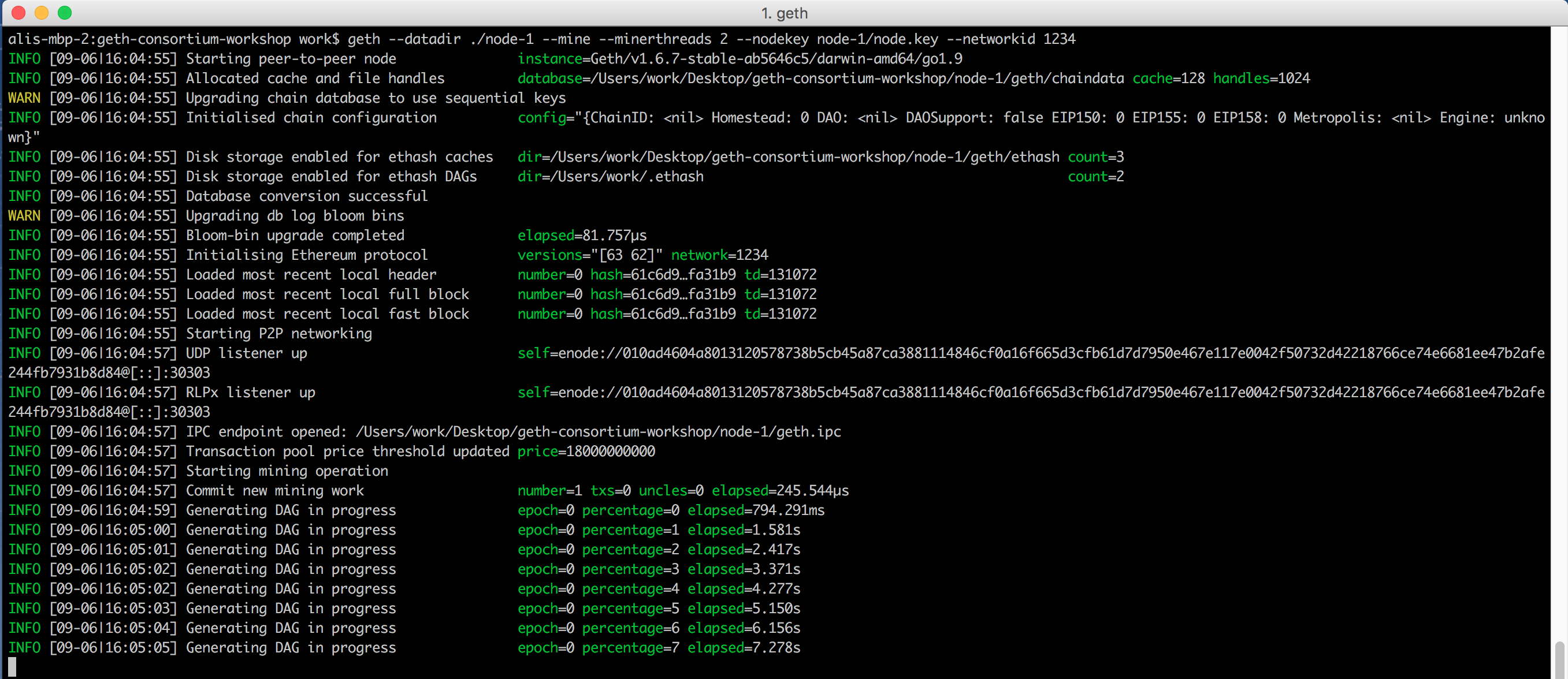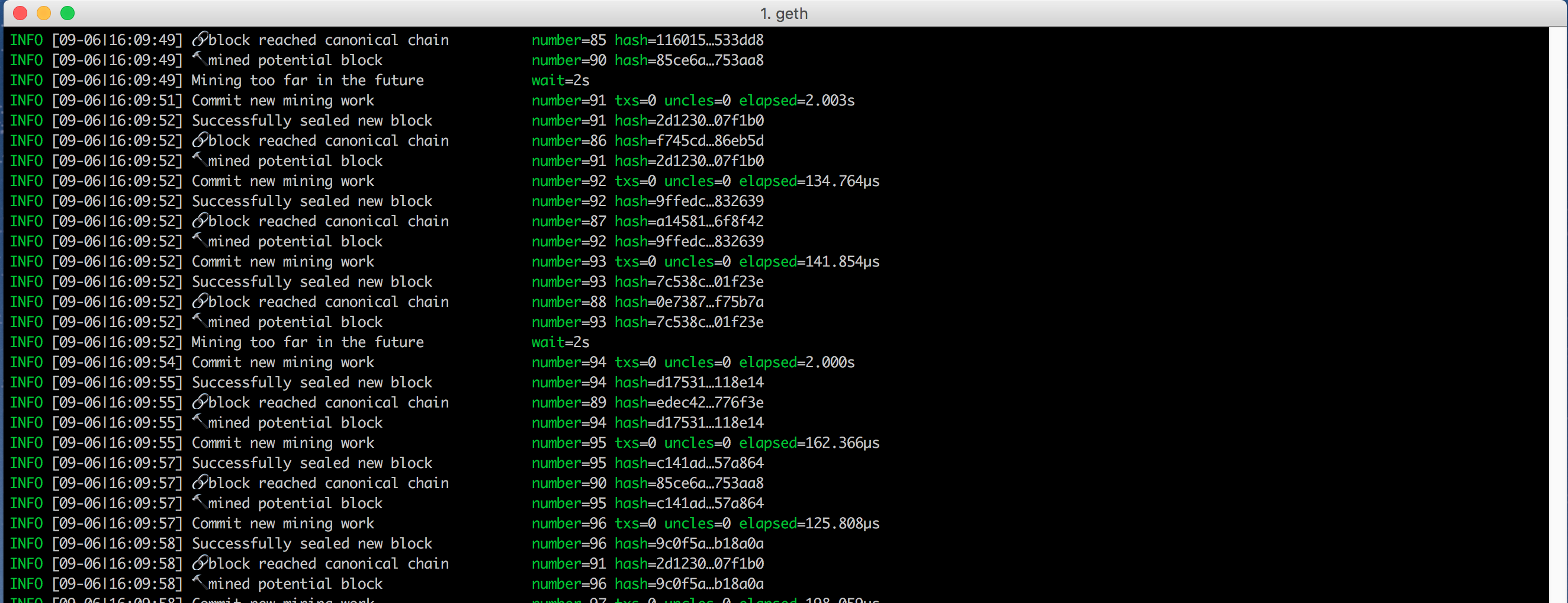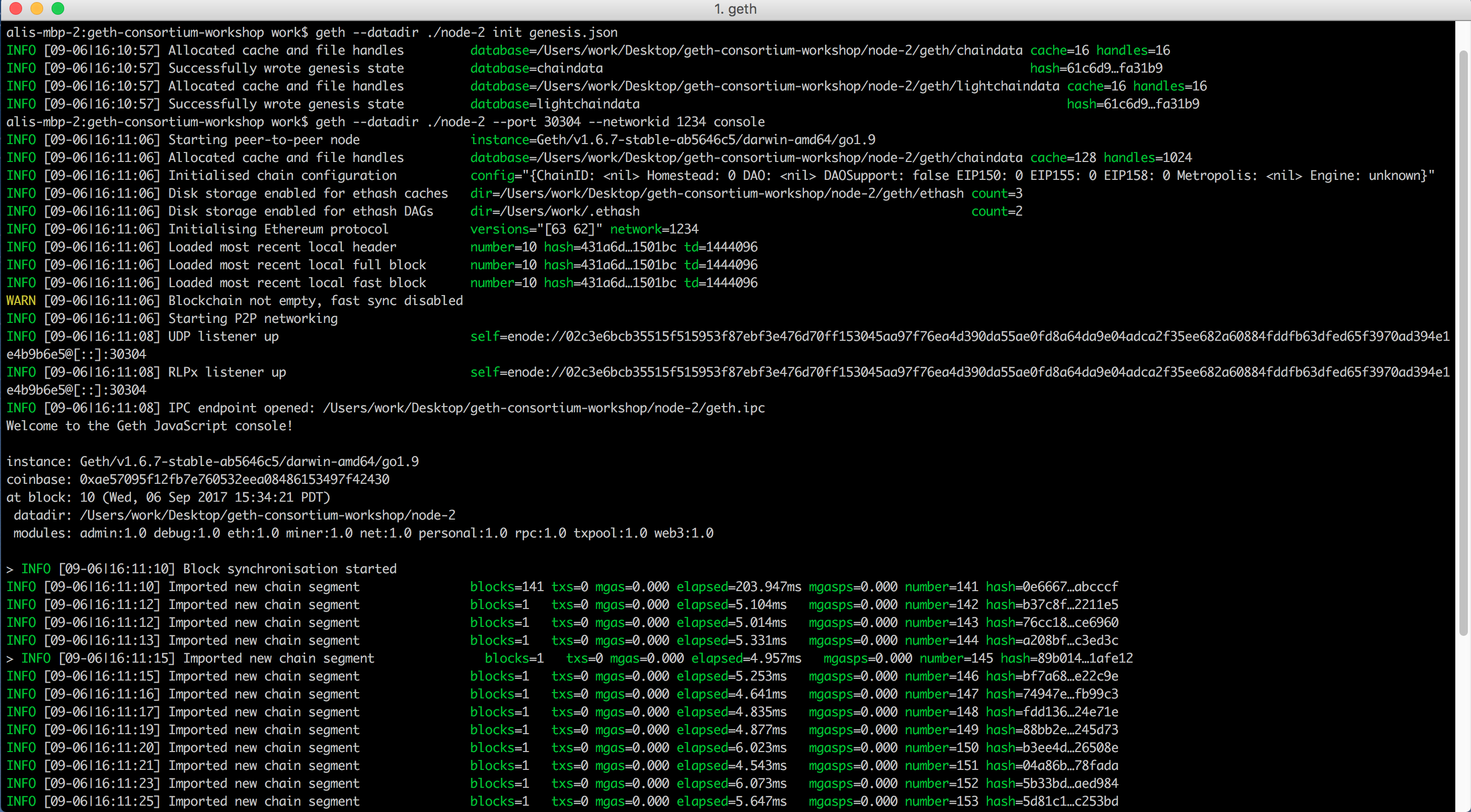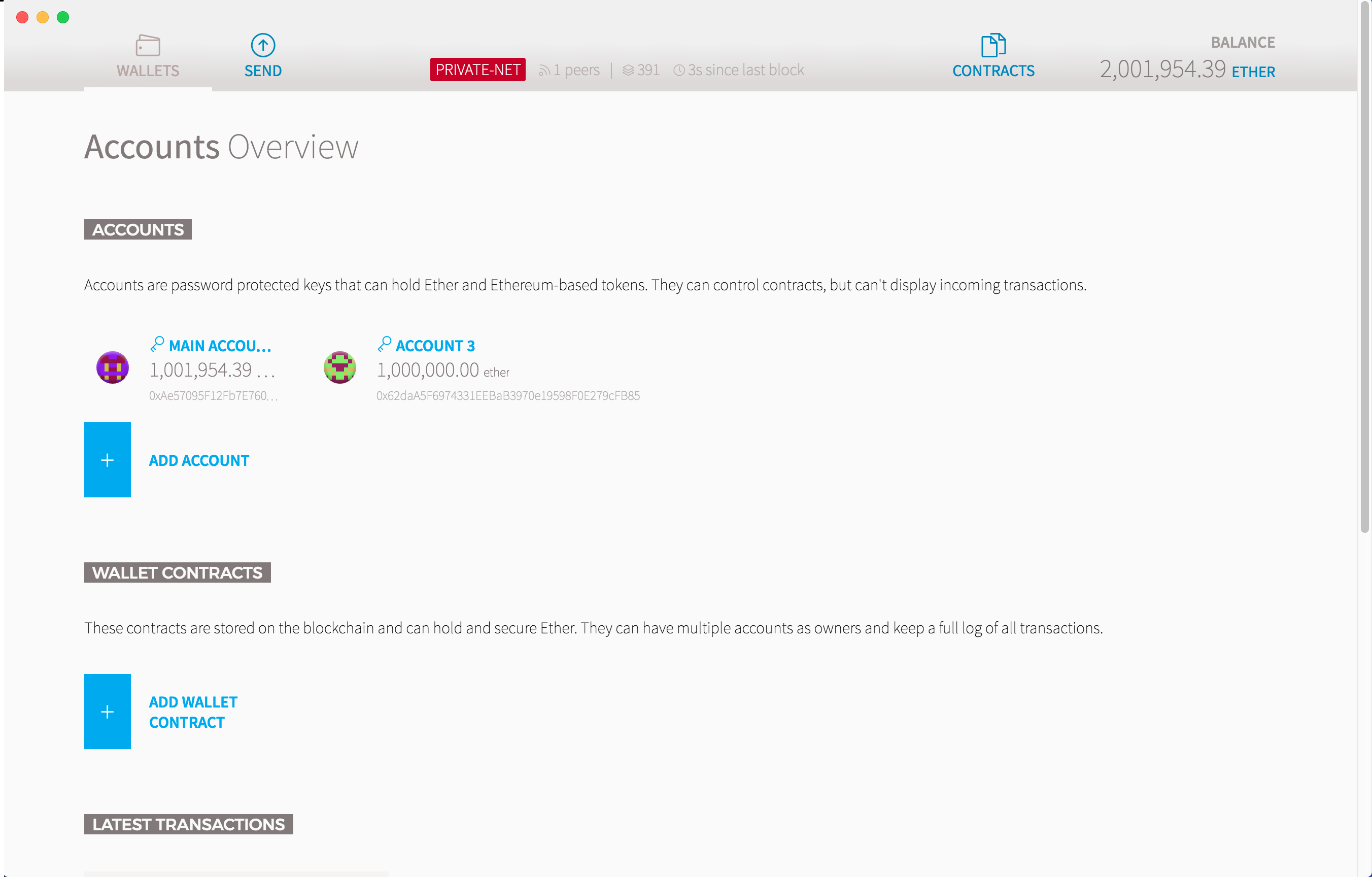This workshop walks you through setting up a private consortium of geth clients with three members. You can read the official documentation on ethereum private networks.
Disclaimer: The content of this repo is for testing and demo purposes only. Make sure to change the provided
genesis.json, accounts,node.key, andstatic-nodes.jsonfor production in addition to security needs for running a blockchain consortium.
- You can get geth via installers or via package managers
- Make sure you have
gethin your path. You can check that by runningwhich gethcommand.
- Download Ethereum or Mist Wallet for your operating system
You need to choose a netwrokid for your consortium. netwrokid can be an arbituraty number and it has to be passed to all nodes on start --networkid <your network id>. You can read more about it here.
To run a blockchain (ethereum) network, you need some nodes to mine (create) blocks. These nodes are called miner nodes. You can read more about mining here.
Open a new terminal window and run the flowing command.
Note: You only need to initiate geth once per node, after that you can just run the "starting command".
cd geth-consortium-workshop
geth --datadir ./node-1 init genesis.json
By running that command, you have turned the content of genesis.json to the hash for the first block.
geth --datadir ./node-1 --mine --minerthreads 2 --nodekey node-1/node.key --networkid <your network id>
Now you are running a geth node with mining enabled. At this point your geth client is generating the DAG.
Once dag is generated, your miner will start making blocks. All the ether generated from the miner will be deposited in 0xae57095f12fb7e760532eea08486153497f42430 account. The ether on private networks don't have any monetary value.
Open a new terminal window and run the following commands:
# Navigate to the cloned project
cd geth-consortium-workshop
# Initialize the genesis block
geth --datadir ./node-2 init genesis.json
# Run geth
geth --datadir ./node-2 --port 30304 --networkid <your network id> console
By running this command, your second node will connect to the miner and download all the created blocks.
Your second node uses the node-2/static-nodes.json file to find the address of the first node. geth
has a built-in discovery method, but it takes some time for nodes to discover one another. So we give them a little hint to speed things up.
After you sync up with the other nodes, your client will download 1 block at a time as blocks are generated. You are running your second node in console mode. Here are the cool things you can do in geth console.
Open a new terminal window and run the following commands:
# Navigate to the cloned project
cd geth-consortium-workshop
# Initialize the genesis block
geth --datadir ./node-3 init genesis.json
# Windows
geth --datadir ./node-3 --port 30305 --networkid <your network id>
# Mac
geth --datadir ./node-3 --port 30305 --ipcpath ${HOME}/Library/Ethereum/geth.ipc --networkid <your network id>
Now you can open the Ethereum or mist wallet.
The wallet by default will look for an IPC socket opened by geth in order to communicate. If there is no IPC socket in the expected path (\\.\pipe\geth.ipc on Windows and ${HOME}/Library/Ethereum/geth.ipc on mac) the wallet will run its own geth process to connect to the main network or the test network.
Coming soon
Coming soon
Coming soon
-
Main account
- Address:
0xae57095f12fb7e760532eea08486153497f42430 - Password: no password (just press enter)
- Address:
-
Account 1
- Address:
0x62daa5f6974331eebab3970e19598f0e279cfb85 - Password:
2017
- Address:
To reset everything you can:
- a) Delete all the
gethfolders innode-1,node-2, andnode-3directory - b) Or do it the easier way
git clean -xdf. This command removes all files that are not tracked by git




